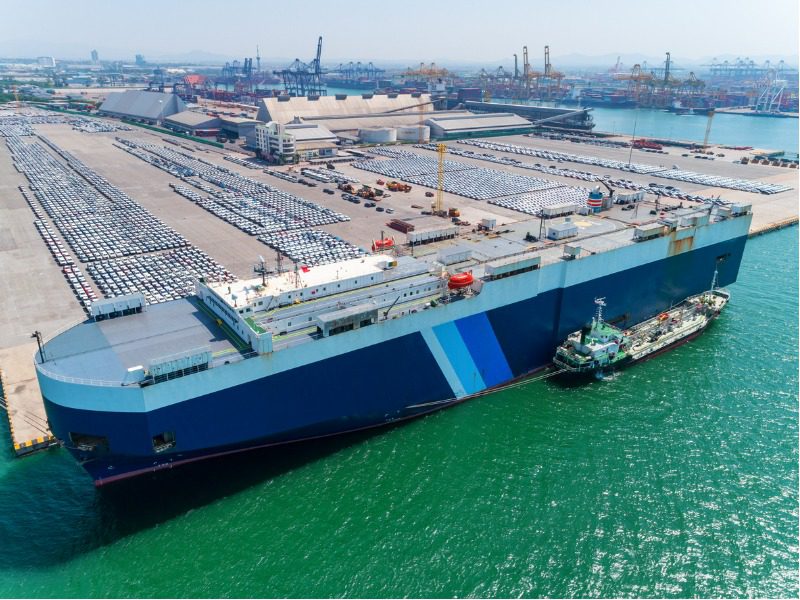Ways to prevent losses when EVs catch fire onboard ships

Electric vehicles are fire! Literally.
The large lithium-ion batteries they contain can catch fire faster than the ones used in laptops or cell phones, and those fires are particularly perilous when they happen on board ships transporting EVs to markets around the globe, said a new report from Allianz Global Corporate & Specialty (AGCS).
Fires can happen when the batteries are being transported either installed in EVs or packed separately as cargo. The report pointed to four main hazards:
Fire – stemming from lithium-ion batteries which contain electrolyte, a liquid which can ignite.
Explosion – which can happen if ignitable vapours or gasses are released in a confined space like the a ship’s hold.
Thermal runaway – a rapid, self-heating fire that can cause an explosion.
Toxic gases – which can be produced by any of these hazards.
While shipping losses overall have declined by more than half over the past 10 years, vessel fires are still the industry’s biggest safety issue, said Captain Rahul Khanna, AGCS’s global head of marine risk consulting.
Of 54 total losses reported in 2021, fire/explosion was the second-highest cause after foundering. And, of more than 240,000 marine insurance industry claims during the past five years, fire/explosion accounted for 18% of claims and was the most expensive cause, the report said.
“Potential dangers that the transportation of lithium-ion batteries pose if they are not stored or handled correctly only add to these concerns, and we have already seen a number of incidents,” Khanna said.
“Companies should do [everything possible] to implement, develop and follow robust loss-prevention measures, given the growing popularity of electric vehicles means many more vehicles with lithium-ion batteries will be transported by sea in future.”
The most common causes of shipboard fire hazards are improperly manufactured or damaged battery cells and devices, over-charging of the battery cells and excessive temperature from short circuiting, the report said. Batteries can be damaged if they’re poorly packed and handled or when inadequately secured cargos shift in rough seas.
“In most shipboard incidents a thermal runaway event can be a significant possibility unless immediate action is taken by the crew, such as suppressing a fire with copious amounts of water over a long period of time,” said Khanna.
“This can be extremely challenging due to factors such as early detection being difficult, a shortage of crew members on board, and if the vessel’s firefighting capabilities are inadequate.”
AGCS’s report emphasized the need for loss prevention, including proper training in the packing and handling of lithium-ion batteries and training crew members to fight battery fires.
They also must make sure the batteries’ state of charge is at the correct level for transport and that EVs with low ground clearance are labelled, because they can have issues around loading and discharging inside the ship.
Cars need to be properly secured so they don’t shift, particularly on roll-on, roll-off cargo carriers which, unlike traditional cargo ships, aren’t divided internally. That creates large open spaces with lots of oxygen that can help fuel a fire, and the cargo spaces are hard for crews to access once fully loaded.
Crews also need to establish fire watches and use closed-circuit television systems, thermal scanners, gas detectors, and heat and smoke detectors to detect fires quickly, said the report.
Feature image by iStock.com/Suriyapong Thongsawang




